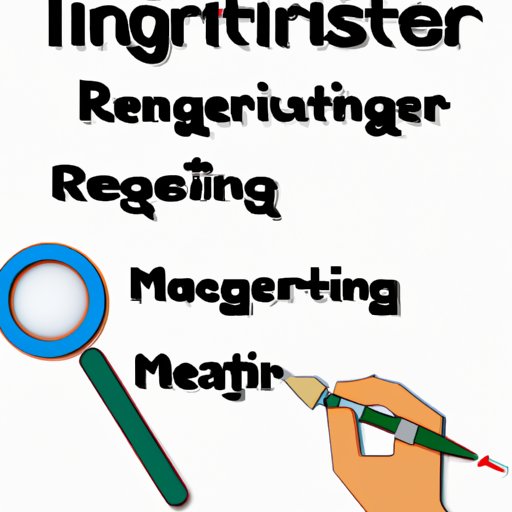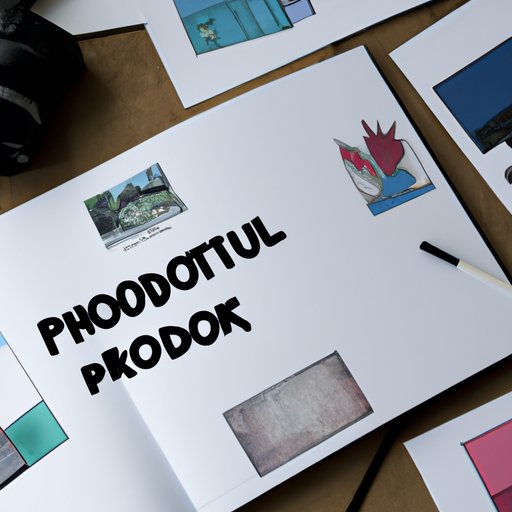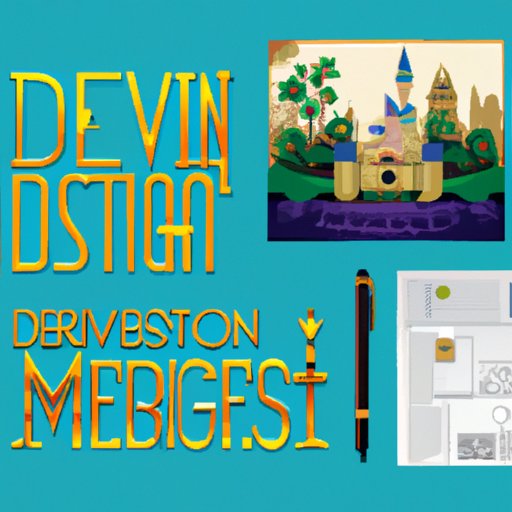Introduction
The term “Imagineer” was coined by Walt Disney himself to refer to the team of creative professionals responsible for designing and building his iconic theme parks. To this day, the Imagineers are behind some of the most innovative and remarkable attractions, rides, and experiences in the world. Becoming a Disney Imagineer requires a combination of technical knowledge and creative ideas, as well as a passion for bringing joy to others through the power of imagination.
Definition of an Imagineer
An Imagineer is a professional who works with the Walt Disney Company to design and develop theme parks, attractions, and other experiences. They combine their expertise in engineering, architecture, art, technology, and storytelling to create unique, immersive environments. According to Disney, “Imagineers use a mix of creativity, innovation, and technology to bring stories, characters, and worlds to life in new and exciting ways.”

Benefits of Becoming an Imagineer
There are many benefits to becoming a Disney Imagineer. As part of the Disney team, you’ll be able to work on cutting-edge projects that challenge your creativity and push the boundaries of what’s possible. You’ll be surrounded by passionate individuals who share your love for innovation and storytelling. And, of course, you’ll have the opportunity to make dreams come true for millions of people around the world.

Research the Role and Requirements of an Imagineer
Before you begin the journey to becoming an Imagineer, it’s important to understand what the role entails and what qualifications are necessary. This will help you determine whether or not you have the right background and skills to pursue the position.
Understand What an Imagineer Does
The work of an Imagineer is incredibly varied. They are responsible for creating everything from concept designs to ride systems to special effects. According to one Imagineer, “We think of the entire experience—from the time the guest steps into the queue to when they exit the attraction—and figure out ways to make it more enjoyable.” Some of the tasks they may be involved in include:
- Storyboarding
- Designing sets, props, and costumes
- Developing ride systems
- Creating special effects
- Programming audio and visual systems
- Developing interactive experiences
- Conducting research and development
Learn About the Qualifications Needed
To become an Imagineer, you must possess a combination of technical knowledge, creative ideas, and strong problem-solving skills. According to Disney, “We look for candidates who are passionate about the possibilities of storytelling and creating unique experiences for our guests.” The company also looks for individuals who have the following qualifications:
- A degree in a related field (engineering, architecture, art, etc.)
- Experience in project management, design, or programming
- Strong communication and presentation skills
- Familiarity with industry-standard software
- Ability to work independently and as part of a team
Acquire the Necessary Skills, Education, and Experience
In order to become an Imagineer, you must have the necessary knowledge, skills, and experience. Here are three key steps you should take to prepare yourself for the role.
Develop Technical Knowledge and Skills
Having a strong understanding of engineering, architecture, and technology is essential for working as an Imagineer. You should familiarize yourself with the latest industry trends and technologies, and develop your skills in areas such as computer-aided design (CAD), 3D modeling, programming, and animation. Taking classes or attending workshops can be a great way to gain these skills.
Pursue Relevant Education and Degrees
Although a college degree is not required to become an Imagineer, having one can certainly give you an edge in the competitive application process. Pursuing a degree in a related field such as engineering, architecture, or art can provide you with the skills and knowledge needed to succeed in the role. Additionally, many universities offer specialized programs in theme park design and Imagineering.
Gain Practical Experience
In addition to formal education, gaining practical experience is essential for becoming an Imagineer. Working on independent projects or volunteering at a theme park can help you develop valuable skills and demonstrate your commitment to the field. You should also consider joining a student organization or club related to theme park design or Imagineering.
Network with Current and Former Imagineers
Networking with current and former Imagineers can be a great way to learn more about the role and get insider tips on the application process. Here are three strategies you can use to connect with professionals in the field.
Reach Out to Professionals in the Field
Using professional networks like LinkedIn, you can search for current and former Imagineers and reach out to them directly. Ask them questions about their experience, what advice they have for aspiring Imagineers, and if they know of any upcoming job openings.
Attend Networking Events
Networking events are a great way to meet current and former Imagineers and discuss potential job opportunities. Many organizations, such as the International Association of Amusement Parks and Attractions (IAAPA), host conferences and seminars throughout the year. Attending these events can be a great way to make connections and learn more about the industry.
Utilize Professional Resources
Professional organizations, such as the Themed Entertainment Association (TEA), provide members with access to exclusive resources and networking opportunities. Joining a professional organization can be a great way to stay up-to-date with the latest news and trends in the industry, as well as connect with other professionals.

Develop a Portfolio Showcasing Your Creative Ideas
As part of the application process, you may be asked to submit a portfolio of your work. This is your chance to show off your creative ideas and demonstrate your knowledge of theme park design and Imagineering. Here are three steps for creating a portfolio that stands out from the crowd.
Brainstorm Creative Ideas
Start by brainstorming some creative ideas for rides, attractions, and experiences. Think about what unique elements you can bring to the table and how your ideas might fit into the existing Disney parks. Consider using the Disney Design Process to help structure your ideas and ensure that each element of your design supports the overall story.
Create Concept Art and Renderings
Once you have some ideas, you can start creating concept art and renderings to bring your ideas to life. Use CAD software, 3D modeling tools, and other digital tools to create visuals that accurately convey your vision. If you don’t have access to these tools, you can also create sketches or use traditional mediums such as clay or paint.
Assemble Your Work into a Professional-Looking Portfolio
Once you have all your pieces ready, you can assemble them into a professional-looking portfolio. Include a brief description of each project and explain how it demonstrates your skills and knowledge. Make sure to proofread your portfolio for any mistakes, and double-check that all the files are properly formatted and labeled.
Submit an Application to Disney’s Imagineering Team
When you’re ready to apply, you can visit the official website of Disney’s Imagineering team to find open positions and learn more about the application process. Here are some tips for submitting a successful application.
Familiarize Yourself with the Application Process
Before you apply, it’s important to familiarize yourself with the application process. Read through the job description carefully and research the company and its values. Make sure you understand the qualifications and criteria for the position, as well as any deadlines and requirements.
Collect Required Documents
Most applications will require you to submit a resume, cover letter, and portfolio. Make sure to tailor your documents to the specific position you’re applying for. You may also need to submit references, transcripts, and other supporting materials.
Follow All Instructions Carefully
It’s important to follow all instructions carefully. Make sure you read the instructions thoroughly and follow all guidelines for formatting, length, and content. Pay close attention to the details and double-check your work to ensure accuracy.
Attend Interviews and Presentations
If your application is selected, you may be invited to attend an interview or presentation. This is your chance to demonstrate your knowledge and passion for the field. Here are some tips for preparing for interviews and presentations.
Prepare for Interview Questions
Your interviewers will likely ask questions about your experience, qualifications, and skills. Prepare for common questions and practice your answers ahead of time. Research the company and its values and be prepared to answer questions about why you believe you’d be a good fit for the role.
Practice Your Presentation
If you’re asked to present your portfolio, practice beforehand to make sure you’re able to confidently explain your work. Consider doing a mock presentation with a friend or colleagues to get feedback and identify any areas that need improvement.
Demonstrate Your Knowledge and Passion
When interviewing or presenting, it’s important to show your enthusiasm for the role and demonstrate your knowledge of the industry. Let your personality shine through and be sure to emphasize your strengths and accomplishments.
Keep Up-to-Date with the Latest Technology and Trends in the Theme Park Industry
Staying up-to-date with the latest technology and trends in the theme park industry is essential for success as an Imagineer. Technology is constantly evolving, and it’s important to keep up with the changes so you can stay ahead of the competition. Here are three strategies for staying informed.
Stay Informed on Developments in Technology
Technology plays a major role in the theme park industry, from ride systems to interactive experiences. Follow blogs and websites related to theme park design and Imagineering, and attend conventions and conferences to stay up-to-date with the latest developments in technology.
Track Changes in Theme Park Design
Theme park design is constantly changing, and it’s important to keep track of the latest trends. Follow the work of current and former Imagineers, and pay attention to the changes being made to existing attractions and parks.
Follow News and Reports Related to the Industry
News and reports related to the industry can provide valuable insight into the current state of the market. Follow industry news and reports, and monitor customer feedback to stay up-to-date with the latest trends.
Conclusion
Becoming a Disney Imagineer is a challenging but rewarding journey. It requires a combination of technical knowledge, creative ideas, and a passion for theme park design. By researching the role, acquiring the necessary skills, education, and experience, networking with current and former Imagineers, developing a portfolio showcasing your creative ideas, submitting an application to Disney’s Imagineering team, attending interviews and presentations, and keeping up-to-date with the latest technology and trends in the industry, you can increase your chances of success and make your dream of becoming an Imagineer a reality.
(Note: Is this article not meeting your expectations? Do you have knowledge or insights to share? Unlock new opportunities and expand your reach by joining our authors team. Click Registration to join us and share your expertise with our readers.)
